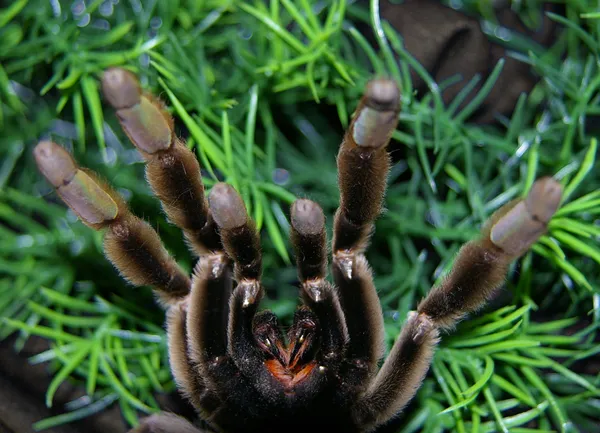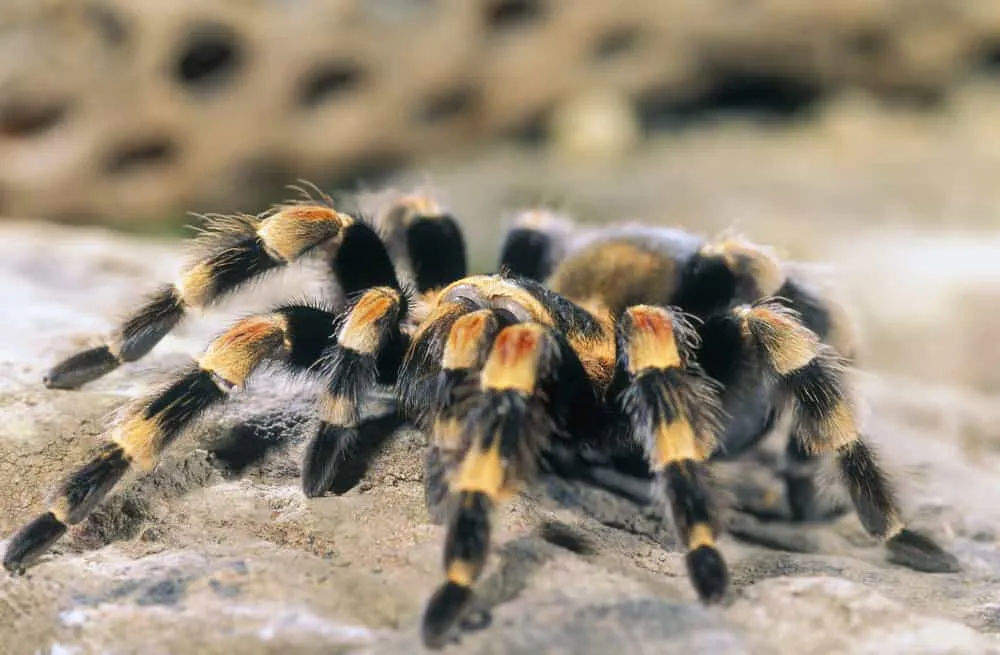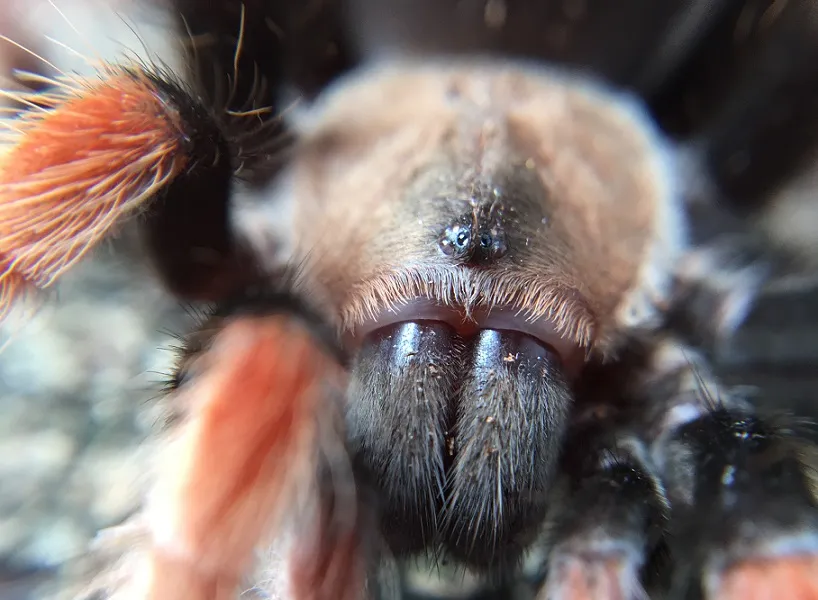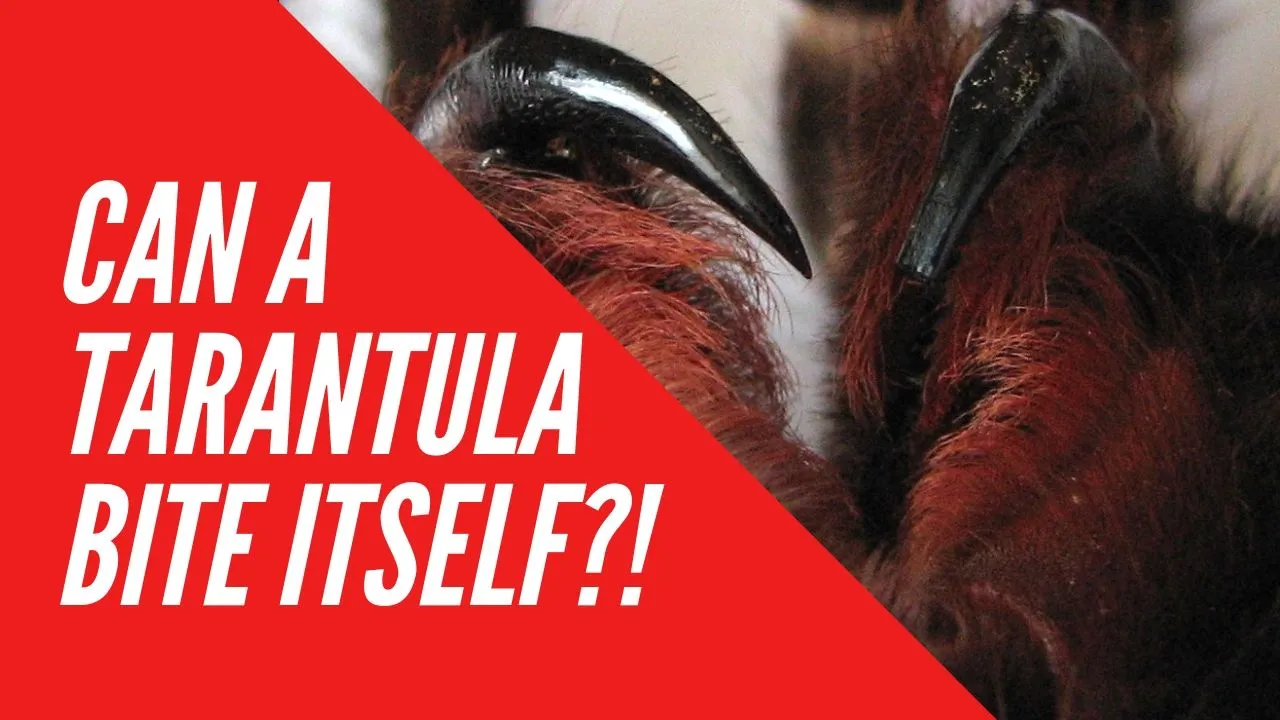What Triggers Tarantula Bites?
Understanding when a tarantula might bite is crucial for anyone who owns, handles, or lives near these fascinating creatures. Tarantulas, despite their intimidating appearance, are generally not aggressive and prefer to avoid conflict. Bites usually occur when the spider feels threatened, provoked, or perceives a direct threat to its safety. Several factors can trigger a tarantula’s defensive behavior, ranging from environmental stressors to direct interactions with humans or other animals. Knowing these triggers is the first step in preventing bites and ensuring a safe environment for both the tarantula and its handlers. Awareness and careful observation of the spider’s behavior are key to minimizing the risk of a bite.
Defense Mechanism of Tarantulas
Tarantulas have evolved a range of defense mechanisms to protect themselves from predators and perceived threats. Before resorting to biting, a tarantula will often display a series of warning behaviors. These can include raising its front legs in a threat posture, hissing, or flicking urticating hairs (tiny barbed hairs) from its abdomen. These hairs can irritate the skin and eyes of a potential attacker. Biting is usually a last resort, employed when the spider feels cornered or when other defensive strategies have failed. Understanding these defense mechanisms helps in predicting and avoiding potentially dangerous situations.
When a Tarantula Feels Threatened

A tarantula perceives a threat based on several factors, primarily its environment and the actions of those around it. Loud noises, sudden movements, and vibrations can be interpreted as threats, causing the spider to feel insecure. A tarantula may also feel threatened by the presence of unfamiliar animals or other perceived predators. Moreover, any attempt to grab or handle the spider without proper precautions is almost guaranteed to trigger a defensive response. Even changes in the spider’s habitat, such as alterations in temperature or humidity, can cause stress and make it more likely to bite. Careful observation of the spider’s environment and behavior is vital to understanding and mitigating potential threats.
During Handling
Handling tarantulas, while sometimes necessary for cage maintenance or health checks, always carries a risk of a bite. Improper handling techniques are a major cause of bites. Grabbing the spider from above, attempting to restrain it, or making sudden movements can all trigger a defensive reaction. It is essential to handle tarantulas gently and with respect, allowing them to move onto your hand willingly whenever possible. Wearing gloves can reduce the risk of a bite and protect the handler from urticating hairs. Furthermore, it’s crucial to avoid handling tarantulas when they are molting, as they are particularly vulnerable and defensive during this period. Careful handling minimizes the risk of a bite.
Factors Influencing Bite Frequency
Several factors can influence how frequently a tarantula might bite. The species of the tarantula is a significant factor, as some species are known to be more defensive than others. The spider’s age and size can also play a role; larger, more mature tarantulas may be more confident and less likely to bite unless severely threatened. Environmental conditions, such as temperature and humidity levels outside the ideal range, can cause stress, leading to an increase in defensive behavior. Additionally, the spider’s overall health and well-being, including nutritional status and the presence of any underlying illnesses or injuries, can affect its temperament and bite frequency. Understanding these factors can help owners create a safer environment.
Species-Specific Behavior

Different tarantula species exhibit varying temperaments and defensive behaviors. Some species are naturally more docile and less likely to bite, while others are known for being more defensive and prone to biting. For instance, certain New World tarantulas are known for their urticating hairs, which they use more frequently than biting, whereas some Old World species may be more inclined to bite. Researching the specific characteristics of the tarantula species is crucial before acquiring one. This helps in understanding its potential for aggression and taking appropriate safety measures. Knowing the typical behavior of your species will allow you to anticipate its reactions and handle it safely.
Habitat and Environmental Stressors
The environment in which a tarantula lives can significantly impact its behavior and likelihood of biting. Stressful conditions within the habitat, such as improper temperature or humidity levels, can make a tarantula feel insecure and defensive. A cramped enclosure or the presence of sharp objects can also increase stress levels. Regular disturbances, such as frequent handling or loud noises near the enclosure, can further exacerbate stress. Maintaining a stable, appropriate environment that meets the spider’s specific needs can significantly reduce stress and minimize the chances of a bite. Careful attention to the habitat is a key aspect of tarantula care and safety.
Understanding Tarantula Temperament
Each tarantula has its own individual temperament, which can vary even within the same species. Factors such as genetics, past experiences, and the environment all contribute to a tarantula’s personality. Some tarantulas are naturally more docile and tolerant, while others may be more skittish or defensive. Observing a tarantula’s behavior over time allows owners to understand its temperament and anticipate its reactions. Knowing whether a tarantula is generally calm or easily startled is crucial for safe handling and interaction. Patience, observation, and respect for the individual spider’s personality are essential for fostering a safe and positive relationship.
The Role of Venom in Tarantula Bites

Tarantula venom, while not typically lethal to humans, can cause localized pain and discomfort. The composition and potency of the venom vary depending on the species of tarantula. Some species have relatively mild venom, while others may have a more potent venom that produces more significant symptoms. The amount of venom injected during a bite can also vary, affecting the severity of the reaction. Understanding the potential effects of the venom is crucial for providing appropriate first aid and medical treatment. It’s important to remain calm and seek medical advice if you experience severe symptoms or have any concerns after a bite.
Severity of Tarantula Bites
The severity of a tarantula bite can vary widely depending on several factors. The species of the tarantula, the amount of venom injected, and the individual’s sensitivity to the venom all play a role. Most tarantula bites are similar to a bee sting, causing localized pain, redness, and swelling. However, some bites may cause more severe symptoms, such as muscle cramps, nausea, or dizziness. In rare cases, allergic reactions can occur, which may require immediate medical attention. The severity of the bite also depends on the health and age of the person bitten. It’s essential to monitor symptoms and seek medical advice if you experience any serious reactions.
Symptoms of a Tarantula Bite
The symptoms of a tarantula bite can range from mild to moderate. Common local reactions include immediate pain at the bite site, redness, swelling, and itching. In some cases, there may be muscle cramps or localized numbness. Systemic symptoms are less common but can include nausea, dizziness, sweating, and increased heart rate. Allergic reactions are rare but can be serious, causing difficulty breathing, swelling of the face or throat, and hives. Monitoring the symptoms closely is essential for determining the appropriate course of action and seeking medical help if necessary. Being aware of what to expect helps in managing the situation effectively.
Local Reactions

Local reactions are the most common symptoms of a tarantula bite. These typically occur at the site of the bite and may include sharp, immediate pain, followed by redness and swelling. The area around the bite may become tender to the touch and may feel warm. Itching is another common symptom, which can be bothersome. The severity of these reactions varies depending on the species of the tarantula and the individual’s sensitivity. In most cases, local reactions subside within a few hours or days. Cold compresses, over-the-counter pain relievers, and antihistamines can help alleviate the symptoms.
Systemic Reactions
Systemic reactions are less common but can be more serious than local reactions. These symptoms affect the entire body and may indicate a more significant reaction to the venom. Systemic symptoms can include nausea, dizziness, muscle cramps, and sweating. Some individuals may experience increased heart rate or a general feeling of being unwell. If you experience systemic symptoms after a tarantula bite, it is important to seek medical attention immediately. Medical professionals can assess the severity of the reaction and provide appropriate treatment, which may include medications to control symptoms and manage complications.
First Aid and Treatment for Bites
Immediate first aid measures are important after a tarantula bite. The first step is to remain calm and remove yourself from the area. Gently clean the bite site with soap and water. Apply a cold compress to reduce pain and swelling. Over-the-counter pain relievers, such as ibuprofen or acetaminophen, can help alleviate discomfort. Antihistamines may help with itching and reduce allergic reactions. Monitoring the symptoms is crucial. Seek medical attention if you experience any severe symptoms or if the symptoms worsen. Medical professionals can provide more specific treatment, including pain management and addressing any complications.
Immediate Steps to Take

Following a tarantula bite, it is important to take immediate steps to address the situation. First, move away from the tarantula to prevent further bites and ensure your safety. Clean the bite area gently with mild soap and water to remove any venom or debris. Apply a cold compress or ice pack wrapped in a cloth to reduce pain and swelling. Elevate the affected limb if possible. If you experience any severe symptoms, such as difficulty breathing, seek medical attention immediately. Note the tarantula’s appearance or species (if possible) to assist medical professionals in providing appropriate treatment. Stay calm and monitor your symptoms closely.
Medical Attention
Medical attention is crucial if you experience any severe symptoms after a tarantula bite. These can include difficulty breathing, severe swelling, dizziness, or persistent pain. Medical professionals can assess the severity of the bite and provide appropriate treatment, which may include pain medication, antihistamines, or, in rare cases, antivenom. They can also monitor for any complications and provide supportive care. Inform the medical professionals about the tarantula species if known, as this can help in determining the best course of treatment. Prompt medical attention can help prevent serious complications and ensure a full recovery.
Preventing Tarantula Bites
Preventing tarantula bites is a key aspect of responsible pet ownership and safe handling practices. Understanding the triggers of bites, such as feeling threatened or during handling, is the first step. Taking precautions and practicing safe handling techniques will greatly reduce the risk. Creating a safe habitat for the tarantula and respecting its natural behaviors also contributes to bite prevention. Proper education and research on tarantula care are vital. By following these guidelines, owners can minimize the risk of bites and maintain a healthy and harmonious relationship with their tarantulas.
Safe Handling Techniques

Safe handling techniques are essential for preventing tarantula bites. Whenever possible, avoid handling the tarantula unless necessary. If handling is required, do so with a calm and gentle approach. Allow the tarantula to walk onto your hand willingly rather than grabbing it. Always handle the tarantula over a soft surface, such as a bed or the floor, to minimize the risk of injury if it falls. Using long-handled tools to gently guide or move the tarantula can also reduce the need for direct handling. Wearing gloves can protect your hands from both bites and urticating hairs. Never make sudden movements or try to corner the tarantula. Patience and respect are key to safe handling practices.
Creating a Safe Habitat
Creating a safe and suitable habitat is essential for the well-being of your tarantula and minimizes the risk of bites. Ensure the enclosure is appropriately sized for the species and age of the tarantula. Provide a secure lid to prevent escapes. Maintain the correct temperature and humidity levels appropriate for the specific species. Furnish the habitat with hiding places, such as cork bark or artificial plants, to allow the tarantula to feel secure. Avoid overcrowding the enclosure and remove any potential hazards, such as sharp objects. Regularly clean the enclosure to maintain a healthy environment. A well-designed habitat reduces stress and contributes to a calmer, less defensive tarantula.
Importance of Research and Education
Research and education are paramount for anyone considering owning a tarantula. Before acquiring a tarantula, thoroughly research the specific species you are interested in, learning about its temperament, care requirements, and potential hazards. This information includes their natural behaviors, habitat preferences, and any potential health issues. Reading books, consulting experienced keepers, and exploring reputable online resources are excellent ways to gain knowledge. Attend educational workshops or join a local herpetological society to learn from experts. Being well-informed enhances your ability to provide proper care and minimize the risk of bites and other incidents. Continuous learning is key.
Recognizing and Respecting Tarantula Behavior
Recognizing and respecting a tarantula’s behavior is fundamental to safe interaction. Observe your tarantula’s body language and behavior cues to understand its mood and anticipate potential reactions. Be aware of threat postures, such as raising the front legs or flicking urticating hairs. If the tarantula displays defensive behavior, back off and give it space. Avoid actions that might startle or provoke the spider. Learn the signs of stress, such as erratic movements or hiding for extended periods. Understanding and respecting a tarantula’s natural instincts allows for safe and positive interactions, reducing the risk of a bite. Patience, observation, and a calm approach are essential.
Further Research and Information
To gain more in-depth information on tarantula care and bite prevention, consult a variety of sources. Explore reputable websites, books, and scientific publications that focus on tarantula husbandry and behavior. Seek advice from experienced tarantula keepers and experts in the field. Visit local herpetological societies or clubs to learn from others’ experiences and attend educational events. If you are considering keeping tarantulas, consider courses or training programs that provide hands-on experience and in-depth knowledge. Continually updating your knowledge base through credible sources will help you keep your tarantula safe.
